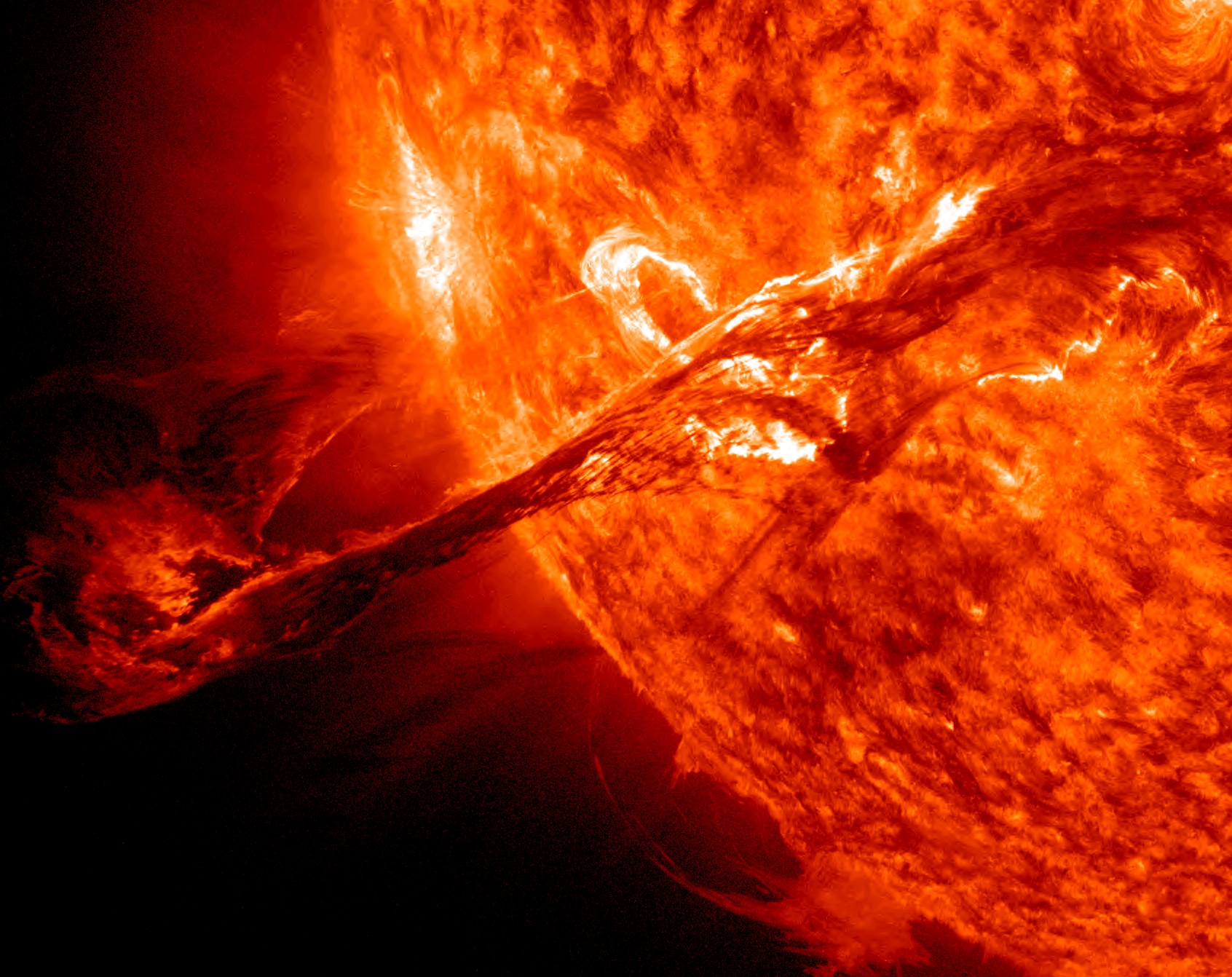Press “play.” Say “wow.”
The enormous eruption of a solar prominence and resulting coronal mass ejection (CME) back on August 31 that was captured in amazing HD by NASA’s Solar Dynamics Observatory was also spotted by the Sun-flanking STEREO-B spacecraft, which observed the gigantic gout of solar material soaring away from the Sun.
This video shows the eruption as it passes across the fields of view of several of STEREO-B’s cameras over the course of 48 hours.
According to NASA’s Goddard Space Flight Center, “while CMEs are routinely seen in the Heliographic Imager (HI) telescopes, it’s very rare for prominences to stay visible for so long. The HI1 field of view ranges from 4 to 24 degrees away from the Sun. To get a sense of scale, we know the Sun is roughly 860,000 miles wide — and look how far the prominence holds together. And this CME is so bright it initially saturates the COR1 telescope.”
The bright spot in the red (COR2) field of view is the planet Venus.
Coronal mass ejections are huge bubbles of gas bounded by magnetic field lines that are ejected from the Sun over the course of several minutes — sometimes even hours. If they are directed toward Earth, the cloud of charged solar particles can interact with our magnetosphere and cause anything from increased auroral activity to radio interference to failure of sensitive electromagnetic equipment.
Particularly long filaments like the one that caused the August 31 CME have been known to collapse with explosive results when they hit the stellar surface.
The CME did not travel directly toward Earth but did connect with Earth’s magnetosphere with a glancing blow, causing bright aurorae to appear around the upper latitudes on the night of September 3.
Image: NASA/STEREO/GSFC


Wow.
So clouds can look like sea birds, but CMEs can look like raptors.
With or without feathers?
That is in the eye of the beholder, methinks. I’m a visual person, so for me wrong colors throw me off and I don’t visualize much detail.
It was kind of a play on this, actually http://www.xkcd.com/1104/